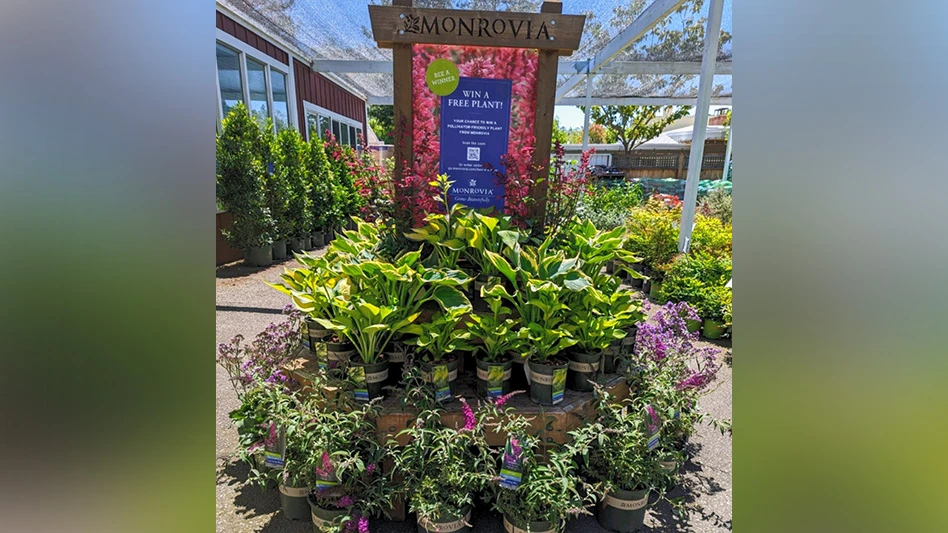 Danny Takao, past president of OFA Danny Takao, past president of OFA |
Q. OFA is among the groups exploring the possibility of a national plant marketing program. How would you describe the feedback you’ve received thus far?
A. It seems everyone sees the benefits, but, depending on what segment and retail channel, there are many opinions on how we proceed. The independent garden center group will not support this if the box stores are involved. The manufacturers have been very quiet during all this talking, but they are dependent on the retail segment to sell our plants—otherwise they will sell less supplies to the growers. In the end we all depend on the retail segments to move our products, and if they can’t make that happen it affects all of us. I’ve heard from a lot of very creative and passionate people with good ideas. Putting this all together with a clear plan and cost will be our next hurdle. The OFA board of directors has allocated some funds and staffing to explore this some more. We aren’t going to let it die off this time.
Q. Do you think this marketing initiative should be low-cost? Should some money be invested in a professionally executed campaign?
A. I’m finding out there is some grassroots marketing going on right now in some of the states, with Arizona leading the way. I don’t know how effective that will be, but at least it’s a beginning, and I applaud everyone for starting this.
But here is my main concern: We know we can sell to the Baby Boomers. It’s the groups under them that need to be our focus. How do you reach them without using people in that target market to create a relevant marketing campaign? We need them to help the current industry leaders (Read: Baby Boomers) implement a program.
Q. Another question that frequently comes up: Where will the money for a campaign come from? What do you envision?
A. The money has to come from the supply chain. I don’t want to depend on the government. If we can’t help ourselves then maybe the “last man standing” is what our industry deserves, and we just allow ourselves and industry to shrink. What I’m hearing is a lot of “I’s” instead of “we’s.” I’m hoping we can, as an industry, make this happen this time around. I’m working with our OFA board to continue to get their support to keep pushing.
Q. There has been some debate about whether a program should tout strictly independent garden retailers.What’s your take on this?
A. I don’t think that’s going to work. In any retail environment the retailer has to earn the customer respect and dollar. Just because the independents ignore the boxes doesn’t mean they are going to go away. They can learn a lot from the boxes and be smart enough to understand this is the new era of checking prices online. My daughter does this all the time on everything she purchases. She can afford to pay, but unless she feels there is some kind of added experience she buys on pricing. The independent garden centers should understand that and accept that’s how the younger group thinks.
We have a garden center called Green Acres here in California that understands the price point issues and is aggressive. They have done fine in battling the boxes.
Q. Why do you think garden centers should embrace a national program?
A. It’s not only the retailers but the entire supply chain that should embrace this. Why? There’s power in numbers. If we fragment into smaller groups there will not be enough critical mass to create the buzz. Do I feel it’s necessary? Let me put it this way: How many happy faces do you see in our industry? We can work together to attempt something that every generation before us tried and failed. I think we still have enough people who still care.
Send your Profiles suggestions to smartinez@gie.net.

Explore the April 2012 Issue
Check out more from this issue and find your next story to read.
Latest from Garden Center
- This Florida garden center's busiest days are in the fall, not spring. Find out how they do it
- Terra Nova Nurseries releases new agastache variety, 'Peach Pearl'
- The Certified Shopify Online Garden Center provides local retailers with ecommerce tool
- Meet the All-America Selections AAS winners for 2025
- Endless Summer hydrangeas and Suntory Senetti glam up Grammys red carpet
- Ball Seed releases 2025 edition of 'Thrive and Flourish' for landscape and garden retail
- American Floral Endowment's Fred C. Gloeckner Foundation Research Fund accepting grant proposals
- Floral Marketing Fund and CalFlowers partner to advance floral industry





